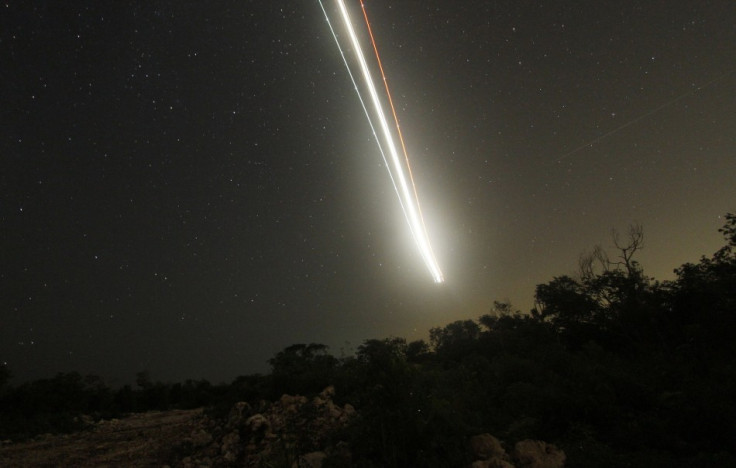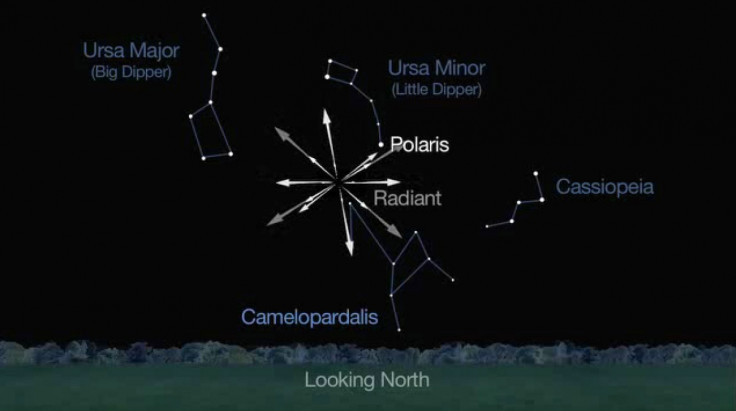Camelopardalid Meteor Shower: Where to Watch Shooting Stars in the UK

The first camelopardalid meteor shower is set to take place on the night of the 23 May, as our planet passes through debris left behind by Comet 209P/LINEAR.
A previously unseen event, skywatchers in North America will have good visibility of the meteor shower, which some astronomers have predicted will bring up to 200 sightings per hour.
The spectacular show is the result of tiny pieces of rock and ice given off by Comet 209P/LINEAR, a faint comet that was discovered in 2004 by the Lincoln Near-Earth Asteroid Research initiative. A meteor shower from this comet has never before graced our skies.
The peak time for the shower will be between 2am and 3am EDT, which is around 7am to 8am BST in the UK. As the meteors will appear after sunrise in the UK, they may not be visible.
Yet there is still hope for skygazers, as if the shower is spectacular enough, some meteors may still be visible in daylight in areas with darker skies.
Speaking to IBTimes UK, Dr Richard Miles from the British Astronomical Association, said it may still be possible to view the celestial event.
"You might see such meteor showers in the daytime - there is some thought it will be large," he explained. "The time is well-defined."
As this is the first meteor shower of its kind, however, Dr Miles added that it may be a "damp squib" or "spectacular". Essentially, the shower is pretty unpredictable for stargazers in the UK.

Yet some areas of Britain may be lucky enough to spot a shooting star or two:
Birmingham, England: Warley Woods, where the Birmingham Astronomical Society occasionally meets to watch the night sky, is a quiet spot to try and see the meteor shower. It is located west from the centre of Birmingham, off the A456 Hagley Road.
Manchester: Heaton Park, the largest park in Great Manchester, has its own astronomy club. It is close to the M60 motorway and is accessible by tram or bus from the city centre.
London: The WaterWorks Nature Reserve is a spot in the capital which is less affected by light pollution. It is near to Clapton and Leyton Midland Rd stations.
Glasgow: The Mugdock Country Park is located partly in East Dunbartonshire and partly in Stirling, and is one of Scotland's most popular tourist attractions.
Suffolk: The Suffolk Coast National Nature Reserve has very little light pollution. Haw Wood Farm, a nearby small caravan site with resident astronomers, has also been described by Dark Sky Discovery as an "extremely dark site with uninterrupted 360 degree viewing".
Cardiff: In February 2013, the BBC reported that the Brecon Beacons Dark Sky Reserve was the fifth destination in the world (and the first in Wales) to be granted special protection as an international dark sky reserve. It is about an hour drive from the city.
Newcastle: Nearly 1,500 square kilometres of Northumberland has been designated an area to conserve and enjoy, giving the Northumberland National Park the status of largest Dark Sky Park in Europe.
Belfast: Oxford Island National Nature Reserve hosted the Northern Ireland showcase event for the BBC Stargazing Live in 2012 and 2013.
Cabrach: The area around Cabrach, a civil parish in Moray, Scotland, is one of the top 30 most remote places in the country. Even if you don't see any meteors, the area has stunning natural beauty.
© Copyright IBTimes 2025. All rights reserved.






















